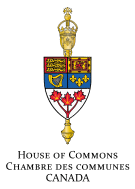HESA Committee Meeting
Notices of Meeting include information about the subject matter to be examined by the committee and date, time and place of the meeting, as well as a list of any witnesses scheduled to appear. The Evidence is the edited and revised transcript of what is said before a committee. The Minutes of Proceedings are the official record of the business conducted by the committee at a sitting.
For an advanced search, use Publication Search tool.
If you have any questions or comments regarding the accessibility of this publication, please contact us at accessible@parl.gc.ca.

Minutes of Proceedings
Jean-Denis Fréchette and Carleigh Malanik made statements and, with Mostafa Askari and Peter Weltman, answered questions.
At 10:05 a.m., the sitting was suspended.
At 10:08 a.m., the sitting resumed in camera.
It was agreed, — That the motion adopted Tuesday, September 27, 2016, concerning the Parliamentary Budget Officer be rescinded and replaced with the following: "That the Committee request the Parliamentary Budget Officer to provide it with an analysis of the following items by (specify date based on PBO’s estimate of earliest date this analysis can reasonably be completed):
a. The total number and percentage of Canadians:
i. who are ineligible for full public coverage of all prescription pharmaceuticals outside of hospitals (under current provincial and federal programs), excluding catastrophic coverage, and who do not have equivalent private or employer sponsored coverage; and
ii. whose private or employer-sponsored coverage has been reduced or eliminated in the past 10 years.
b. Estimate the current Canadian annual total of:
i. employer contributions to employer-sponsored private insurance benefit plans in respect of prescription pharmaceutical coverage;
ii. employee contributions to employer-sponsored private insurance benefit plans in respect of prescription pharmaceutical coverage;
iii. total out-of-pocket payments by patients for prescription pharmaceuticals;
iv. direct and indirect government subsidies to private pharmaceutical insurance plans;
v. expenditure on prescription pharmaceuticals broken down by province or territory and by source of funding;
vi. individual expenditure on private pharmaceutical insurance coverage;
and where possible, broken down by province or territory, by urban/rural, by age quintile and by annual household income quintile, for all of the above information.
c. Estimate the cost of (1) creating and (2) administering:
i. a single-payer universal first-dollar prescription drug coverage under the Canada Health Act; and
ii. a single purchaser and national distribution system for prescription drugs, possibly modeled on the Canadian Blood Services and/or other relevant models in Canada or other jurisdictions.
d. Assume that there is a single national formulary for prescription drugs with tiers based on the relative importance of the health condition treated, and the relative effectiveness of the drug in addressing the health condition, ranging from essential medicines for tier 1, and then proceeding to drugs that are less essential or equivalent but more costly in subsequent tiers.
In terms of the financing of a single-payer prescription drug coverage program, analyze the efficiency of an:
i. introduction of a payroll tax;
ii. increase in sales tax;
iii. increase in corporate and/or personal income tax; and
iv. introduction of a co-pay based on France’s SMR/ASMR model.
e. Discuss the implications of and the tools available for raising any additional revenue needed to finance such a program.
f. To the extent possible:
i. estimate of the total annual savings to the health care system from eliminating cost-related non-adherence to pharmaceutical prescriptions in Canada;
ii. estimate of the total annual savings achievable by a single-payer, as opposed to the present multiplicity of public and private payers, acting as the sole original purchaser of prescription pharmaceuticals in Canada; and
iii. estimate of the total annual savings from bulk buying, exclusive licensing, increased use of generic medicines, and evidence-based formulary.
In carrying out this analysis, the PBO will work with Canadian Institutes for Health Information, Statistics Canada, Canadian Agency for Drugs and Technology in Health, IMS Brogan and other sources to obtain appropriate data. The PBO’s report will disclose in detail the sources of data, the quality of the data and the methods of analysis used".
At 10:45 a.m., the Committee adjourned to the call of the Chair.